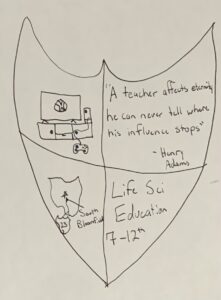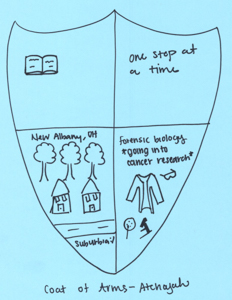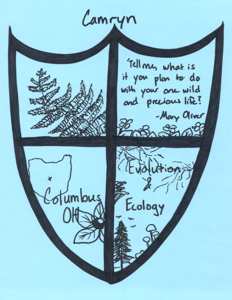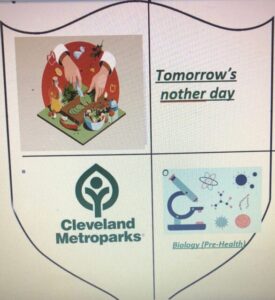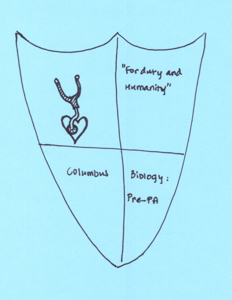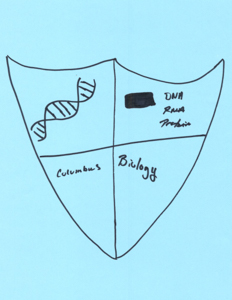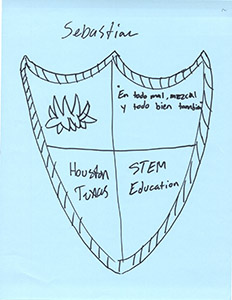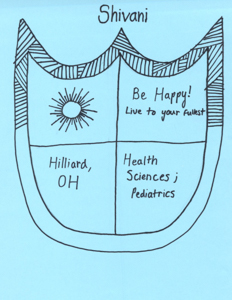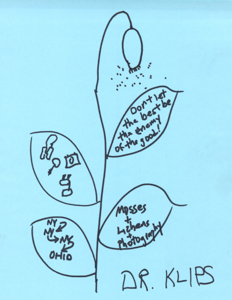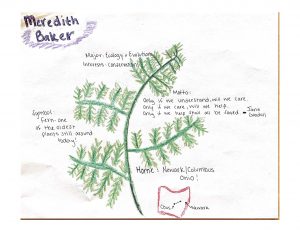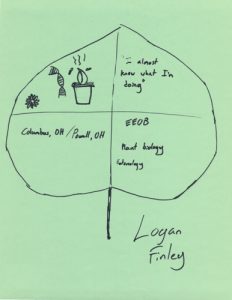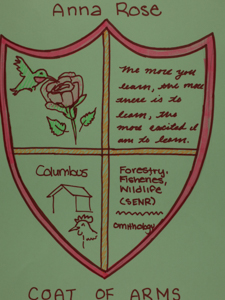It’s been a great pleasure exploring Ohio Plants with you all this term. Enjoy reading some (or all) of the web pages that your classmate colleagues produced this past month. Answers are due Sunday June 5.
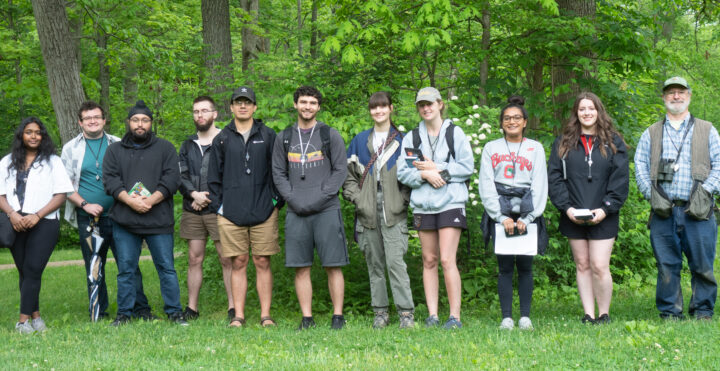
Us at Batelle Darby Metro Park
PART ONE –MINIMUM REQUIRED (10 pts.)
Aaron, on their Deep Woods, The Appalachian Gametophyte and Ohio Geobotany page gives two uses of chestnut oak–one by people and the other by animals. What are these uses?
Atchayah, on their Batelle Darby Metro Park page, found 4 trees and shrubs that love limestone in their soil. What were they?
Camryn, on their Lichens and Bryophytes of Duranceau Park, shows us a round leathery foliose lichen that grows to be about an inch in diameter rooted at a single point. Name this lichen and describe the morphology and function of the dark brown spots with which its surface is littered.
Emily, on their Deep Woods web page, displays bellwort, the specific epithet of which denotes a peculiar feature of the stems and leaves. Name and describe that trait.
Jack, on their Plants of Whetstone Park page, provides information about methods of controlikng multiflora rose. What arwe they, and what potential disadvantage is there to their use?
Jordon, on their Lichens and Bryophytes of Duranceau Park page shows us two colorful yellow small foliose lichens. Name them please and tell how to tell them apart from one another.
Laura, on their Deep Woods, the Appalachian Gametophyte and Ohio Geobotany page cites two instances of an association bewteen the plant and ants. What are they?
Mckenzie, on their Trees page, tells us how and why white mulberry arrived in North America. What for?
Sebastian, on their Plants of Whetstone Park page, tells us that common elder (Sambucus canadensis) is both poisonous and edible. Explain this apparent contrdiction.
Shivani, on their Trees page, compare eastern white pine with a lemon. What is the similarity/difference cited?
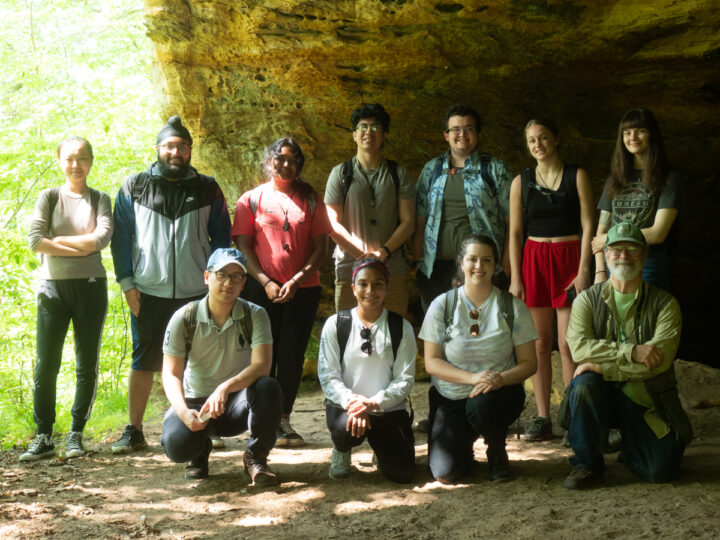
Us at Deep Woods!
PART TWO (EXTRA CREDIT)
Aaron, on their Plants of A.W. Marion State Park page, point out some chemical magic that helps the invasive plant autumn olive do well in poor soils. What is it?
Atchayah, on their Trees page, makes an observation about the tree species diversity in a New Albany neighborhood. What is it?
Camryn, on their Plants of Blendon Woods page, points out that dames rocket is often mistaken for a wholly different wildflower. What is that ine, and how are the to readily told apart?
Emily, on their pLaNTS OF gRIGGS rESERVOIR (GAHH i HATE “cAPS lOCK!), describes a little plant with yellow flowers that seemed somewhat buttercupish at first, but is something different. Name the flower and give also an alternative name for the plant; explain the name.
Jack, on their Lichens (Duranceau Park) page, sets forth several ways in which birds use lichens, and specific benefits they receive from such use. What are they?
Jordon, on their Plants of Indian Village Camp page, was able to identify a woody shrub in part by its fruits. Name the shrub and name and describe its fruit type (not a berry, although most people would probabaly call then berries).
Laura, on their Trees page, describe an amazing instance of a human use of an American sycamore. Describe that please.
Mckenzie, on their Deep Woods, Ohio Geobotany and the Appalachian Gametophyte page, describe a threat to eastern hemlock. Name that threat and describe its mode of action. What is being done to alleviate the situation?
Sebastian, on their Batelle Darby Metro Park page, shows two monocotyledon wildflowers. What are they?
Shivani, on their Batelle Darby Metro Park page, passes along an interesting fact about the ecology of bastard toadflax. What is it?

